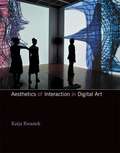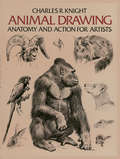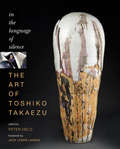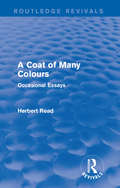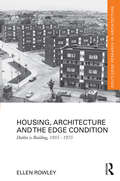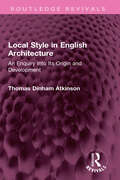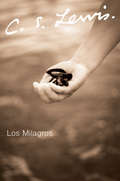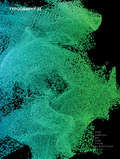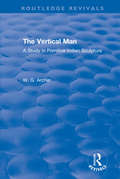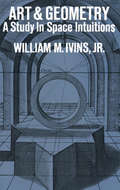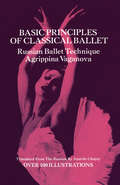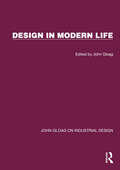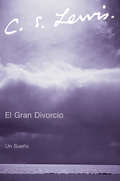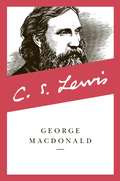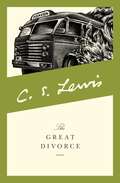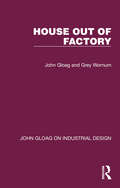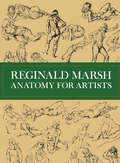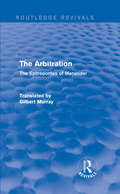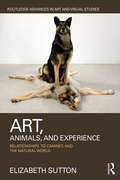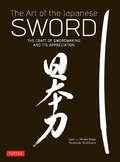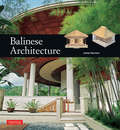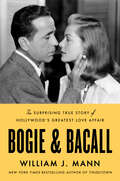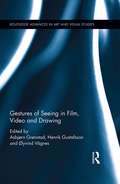- Table View
- List View
Aesthetics of Interaction in Digital Art
by Katja Kwastek Niamh WardeSince the 1960s, artworks that involve the participation of the spectator have received extensive scholarly attention. Yet interactive artworks using digital media still present a challenge for academic art history. In this book, Katja Kwastek argues that the particular aesthetic experience enabled by these new media works can open up new perspectives for our understanding of art and media alike. Kwastek, herself an art historian, offers a set of theoretical and methodological tools that are suitable for understanding and analyzing not only new media art but also other contemporary art forms. Addressing both the theoretician and the practitioner, Kwastek provides an introduction to the history and the terminology of interactive art, a theory of the aesthetics of interaction, and exemplary case studies of interactive media art. Kwastek lays the historical and theoretical groundwork with discussions of processual strategies of twentieth-century art and theories of aesthetic experience, process aesthetics, play, and performance. She then develops an aesthetics of interaction, discussing such aspects as real space and data space, temporal structures, instrumental and phenomenal perspectives, and the relationship between materiality and interpretability. Finally, she applies her theory to specific works of interactive media art, including narratives in virtual and real space, interactive installations, and performance -- with case studies of works by Olia Lialina, Susanne Berkenheger, Stefan Schemat, Teri Rueb, Lynn Hershman, Agnes Heged's, Tmema, David Rokeby, Sonia Cillari, and Blast Theory.
Animal Drawing: Anatomy and Action for Artists
by Charles KnightA master of animal portraiture presents an extensive course in creating lifelike drawings of a host of creatures: great apes, tigers, lions, dogs, bears, horses, crocodiles, snakes, fish, and many others. Subjects include animal musculature, bone structure, psychology, movements, habits, and habitats. Suitable for commercial and fine artists, painters, sculptors, and students. 123 illustrations.
The Art of Toshiko Takaezu: In the Language of Silence
by Peter HeldTracing the artistic development of renowned potter Toshiko Takaezu, this masterful study celebrates and analyzes an artist who holds a significant place in the post-World War II craft movement in America. Born in Hawaii of Japanese descent in 1922, Takaezu has worked actively in clay, fiber, and bronze for over sixty years. Influenced by midcentury modernism, her work has transformed from functional vessels to abstract sculptural forms and installations. Over the years, she has continued to draw on a combination of Eastern and Western techniques and aesthetics, as well as her love of the natural world. In particular, Takaezu's vertical closed forms have become a symbol of her work, created through a combination of wheel-throwing and hand-building techniques that allowed her to grow her vessels vertically and eased the circular restrictions of the wheel. In addition to her art, Takaezu is renowned for her teaching, including twenty years at Princeton University. This beautifully illustrated book offers the first scholarly analysis of Takaezu's life work and includes essays by Paul Smith, director emeritus of the American Craft Museum, and Janet Koplos, former senior editor ofArt in America. Jack Lenor Larsen, a textile designer, author, collector, and advocate of traditional and contemporary craftsmanship, provides a foreword.
A Coat of Many Colours: Occasional Essays (Routledge Revivals: Herbert Read and Selected Works)
by Herbert ReadThis book, first published in 1947, is collection of critical essays by Herbert Read that had not been previously published in book form. The essays cover several different subject areas, including literature, art, architecture, and film, from a span of twenty years. This title will be of interest to a variety of readers.
Housing, Architecture and the Edge Condition: Dublin is building, 1935 - 1975 (Routledge Research in Architecture)
by Ellen RowleyThis book presents an architectural overview of Dublin’s mass-housing building boom from the 1930s to the 1970s. During this period, Dublin Corporation built tens of thousands of two-storey houses, developing whole communities from virgin sites and green fields at the city’s edge, while tentatively building four-storey flat blocks in the city centre. Author Ellen Rowley examines how and why this endeavour occurred. Asking questions around architectural and urban obsolescence, she draws on national political and social histories, as well as looking at international architectural histories and the influence of post-war reconstruction programmes in Britain or the symbolisation of the modern dwelling within the formation of the modern nation. Critically, the book tackles this housing history as an architectural and design narrative. It explores the role of the architectural community in this frenzied provision of housing for the populace. Richly illustrated with architectural drawings and photographs from contemporary journals and the private archives of Dublin-based architectural practices, this book will appeal to academics and researchers interested in the conditions surrounding Dublin’s housing history.
Local Style in English Architecture: An Enquiry Into Its Origin and Development (Routledge Revivals)
by Thomas AtkinsonOriginally published in 1947, this book examines the regional styles of architecture which developed inside England itself, particularly during the later medieval period. It discusses the causes and locations of these regional variations. In explaining the cause for the geographical variations in stye, the author investigates the various factors responsible for bringing them about, such as geology, race, religion, foreign influence, transport and fashion. As churches have survived the passage of time better than many secular buildings, the emphasis is on church architecture (although not exclusively). The book contains over 120 photographs and the book is an original and important inquiry into the origin and development of local styles in English architecture.
Los Milagros (Libros De Bolsillo Ser.)
by C. S. Lewis¿En realidad suceden milagros?"El milagro principal del que hablan los cristianos es la Encarnación. Ellos dicen que Dios se hizo Hombre. Cualquier otro milagro sucedió en preparación para esto, o es un resultado de esto."Este es el punto clave de Los Milagros, obra en la cual C. S. Lewis nos muestra que un cristiano debe no sólo aceptar sino también regocijarse de los milagros como testimonios de la participación de Dios en la creación. Utilizando su característico calor, lucidez e ingenio, Lewis desafía a los racionalistas y a los cínicos por su falta de imaginación, y ofrece una poética y alegre afirmación que los milagros sí ocurren en nuestras vidas cotidianas.
Typography 33
by Type Directors ClubFor over fifty years, the Type Directors Club has encouraged the worldwide graphic arts community to achieve excellence in typography through its annual international competitions. Typography 33 is the only annual devoted exclusively to typography and presents the finest work in the field for the year 2011. Selected from approximately 2300 international submissions to the annual Type Directors Club competition, the winning designs are models of excellence and innovation in the use of type design, representing a wide range of categories including books, magazines, corporate identities, logos, stationery, annual reports, video and web graphics, and posters.
The Vertical Man: A Study in Primitive Indian Sculpture (Routledge Revivals)
by W.G. ArcherOriginally published in 1947, The Vertical Man explores a form of Indian sculpture largely ignored in other studies, with a focus on two kinds of sculpture from the province of Bihar. The book provides detailed analysis of the formal characteristics of the sculpture and the influences of the myth, ritual, and context in which they were commissioned and made. It explains why the sculpture is regional and "why the styles are what they are". It is an original study which throws light on important subjects such as the relations of art and religion and of art and economics. The Vertical Man will appeal to those with an interest in art, specifically sculpture and the art of the Indian countryside.
Art and Geometry: A Study in Space Intuitions
by William M. IvinsOne of Western civilization's jealously guarded myths is that of Greek cultural supremacy. In this controversial study, William Ivins shows that the limitations of the Greek worldview actually hampered the development of the arts and sciences and gives a stimulating history of the new ideas of the Renaissance, especially in painting and geometry, that freed us from ancient misconceptions. Beginning with the Greeks, the author explains for the general reader the differences between ancient and Renaissance painting and sculpture, proving that the curiously static quality of Greek art arose from a misunderstanding of the laws of perspective. He then shows how this misunderstanding was corrected by Alberti, Pelerin, Durer, and other Renaissance artists who provided the first fruitful investigations of perspective. From there to projective geometry was but a step, and the author covers this major advance in our knowledge through the work of Nicholas of Cusa, Kepler, and Desargues. This book is perhaps the only concise history in English of the development of mathematical perspective and projective geometry. But the author's ability to relate styles in art to advances in geometry and his ingenious theory of the modern "visual" worldview and the Greek "tactile" worldview mean that his book will be provocative not only to mathematical historians but also to art historians and to anyone concerned with the history of thought, from philosopher to layman.
Basic Principles of Classical Ballet
by Agrippina VaganovaAlthough the stars of Russian ballet Anna Pavlova and Tamara Karsavina possessed a national manner of dancing, there was no truly Russian school of dancing until the 1930s. The development of this school was largely due to Mme. Vaganova (1879-1951), not only a great dancer but also the teacher of Galina Ulanova and many others and an unsurpassed theoretician.The principles of Vaganova's system are presented in this well-known book. Mme. Vaganova's aim of creating a personal approach to the Russian dance was based on the critical assimilation of the experience of her contemporaries. Her ability to choose the best of what had been accomplished in the various ballet traditions (French, Italian, and Russian) and combine these into a unified teaching practice in itself amounted to a new school of dance. She firmly believed that the teaching process should be a planned exercise, ever changing with innovations in the dance. She sought from her pupils emotional expressiveness, strictness of form, a resolute, energetic manner of performance, and the understanding of the underlying coordination of movements.Her book discusses all basic principles of ballet, grouping movements by fundamental types. Chapters cover battements, rotary movements of the legs, the arms, poses of the classical dance, connecting and auxiliary movements, jumps, beats, point work, and turns as well as material for a sample lesson. Diagrams show clearly the exact foot, leg, arm, and body positions for the proper execution of many steps and movements. The result is a fundamental theory of dance that offers dancers, teachers, and ballet lovers information often difficult to locate in other books. 118 illustrations.
Design in Modern Life (John Gloag On Industrial Design Ser.)
by John GloagOriginally published in 1946, this book is based on a series of broadcast talks on design. Led by an engineer, an artist and critic of architecture and industrial design, the discussions focussed on the problems that were involved by a general application of design to the environment of contemporary life. It surveys the possibilities of design in modern life and the talks have been rewritten, amplified and revised for the purposes of the book.
El Gran Divorcio: Un Sueno
by C. S. LewisUn fantástico viaje entre el Cielo y el InfiernoEn El Gran Divorcio, C. S. Lewis de nuevo utiliza su formidable talento para contar fábulas y alegorías. En un sueño, el escritor se sube a un autobús una tarde lloviznosa y se embarca en un increíble viaje por el Cielo y el Infierno. Este es el punto de partida para la profunda meditación sobre el bien y el mal."Si insistimos en quedarnos con el Infierno (o incluso la Tierra) no veremos el Cielo: si aceptamos al Cielo no podremos quedarnos ni siquiera con el más pequeño e íntimo souvenir del Infierno."
George MacDonald (Collected Letters Of C. S. Lewis Ser.)
by C. S. LewisIn this collection selected by C. S. Lewis are 365 selections from MacDonald's inspiring and challenging writings.
Grassroots Baseball: Route 66
by Jean Fruth Jeff Idelson Jim ThomeJust as baseball is at the heart of America, so too is Route 66. This book is a photographic tribute to the national pastime along the artery that stretches from the shores of Lake Michigan, close to where the Cubs play, to the Pacific Ocean at Santa Monica, where baseball memories and players abound. Among the players who will guide readers on the journey will be baseball greats George Brett, Billy Hatcher, Alex Bregman, and Ryan Howard. Leading off will be Johnny Bench of Binger, Oklahoma, and cleaning up will be Jim Thome of Peoria, Illinois.In Grassroots Baseball: Route 66, photographer Jean Fruth weaves more than 250 full-color images of the national pastime along the historic highway into a tapestry that reminds us of the heart and soul of America.Route 66 passes through eight states in its journey to the Pacific, and each chapter opens with a first-person essay by a baseball legend from that locale recounting his early memories of playing the game, and what it was like growing up along the Mother Road. That highway took stars like George Brett, Billy Hatcher, Alex Bregman, Adam LaRoche, and Ryan Howard to faraway places they only dreamed about as kids.Each chapter documents the route they took, from sandlots, ranches, and beaches to ballparks at every level of organized baseball, from Little League games to the World Series. With an introduction by Johnny Bench, a foreword by Mike Veeck, a preface by retired Hall of Fame President Jeff Idelson, and an afterword by Jim Thome, this book touches all the bases for any and every baseball fan.
The Great Divorce (C. S. Lewis Signature Classic Ser.)
by C. S. LewisC. S. Lewis takes us on a profound journey through both heaven and hell in this engaging allegorical tale. Using his extraordinary descriptive powers, Lewis introduces us to supernatural beings who will change the way we think about good and evil.
House Out of Factory (John Gloag On Industrial Design Ser.)
by John Gloag Grey WornumOriginally published in 1946, when Britain was facing a post-war housing crisis, this book dealt with the issue of the factory-produced house in being part of the solution for housing people in an affordable manner and a short time-scale. The book, aimed at both lay-people and technicians discusses aspects of pre-fabricated housing such as comfort, standardisation and aesthetics. The book is illustrated with 48pp of black and white plates.
Anatomy for Artists (Dover Anatomy for Artists)
by Reginald MarshPortraying the living human form, not only with anatomical accuracy, but so that it conveys motion, emotion, and vitality is one of the greatest challenges faced by the artist. In the studies in this volume, famous artist and art instructor Reginald Marsh brought his genius to bear on the complex problem of life drawing. Delving into the work of the great masters (Michelangelo, Leonardo, Raphael, Rubens, Poussin, Dürer, Holbein, and others), Marsh simplified, abstracted, adapted, and reinterpreted their work into a collection of drawings both immensely interesting and instructive to the practicing artist and the student. The 209 pages of drawings in this volume show the human body in a wide variety of positions, viewed from many different angles. Marsh directs special attention to those angles, aspects, and physical positions which are the most difficult to portray. His great talent, coupled with a rare ability to instruct others (Marsh taught at the Art Students League for many years) gave him unusual sensitivity to the concerns of the artist in life drawing: his concise commentary on the drawing points up the problems addressed in each -- tone, movement, proportion, composition, etc. The front, side, back, head, arms and hands, legs and feet, and full figure drawings are all included. A separate section on the problems of proportion explores 7, 7 1/2, and 8 head schemes, providing an unusually workable and lucid treatment of the topic for the practicing artist. The body and parts of the body are drawn in skeleton, tissue and muscle, major bone structure, and as they appear in life. Marsh studied medical anatomy as well as the work of the great medical artists in order to perfect his knowledge of human anatomy. All of the hundreds of drawings, figures, and details of this volume have been excellently reproduced in this edition. The last 95 drawings in the book are all original studies by Marsh, never before published in book form. These casual, light-hearted drawings (mostly of female nudes) illustrate both Marsh's seemingly easy mastery of the techniques of life drawing, and his characteristic lusty, Rubenesque style. Because they are so distinctly in his own style, these drawings highlight the great scope and knowledgeability he has shown in the earlier instructive studies. Those who know and admire Marsh as an artist, as well as anyone who wishes to learn to draw from life, will find this volume indispensable.
The Arbitration: The Epitrepontes of Menander (Routledge Revivals)
by Gilbert MurrayGilbert Murray translated and made available to modern readers The Epitrepontes of Menander or The Arbitration for the first time in 1945. The Arbitration is among the most frequently quoted and most famous of Menander’s plays and – being less farcical than others - belongs to his mature style. With an interesting and informative introduction, this translation will be of value to any student of Classics and Ancient Greek drama.
Art, Animals, and Experience: Relationships to Canines and the Natural World (Routledge Advances in Art and Visual Studies)
by Elizabeth SuttonElizabeth Sutton, using a phenomenological approach, investigates how animals in art invite viewers to contemplate human relationships to the natural world. Using Rembrandt van Rijn’s etching of The Presentation in the Temple (c. 1640), Joseph Beuys’s social sculpture I Like America and America Likes Me (1974), archaic rock paintings at Horseshoe Canyon, Canyonlands National Park, and examples from contemporary art, this book demonstrates how artists across time and cultures employed animals to draw attention to the sensory experience of the composition and reflect upon the shared sensory awareness of the world.
The Art of the Japanese Sword
by Yoshindo Yoshihara Hiroko Kapp Leon KappIn The Art of the Japanese Sword, master swordsmith Yoshindo Yoshihara offers a comprehensive view on the making, finishing and appreciation of Japanese blades.The Japanese sword, a unique work of art in steel, can be appreciated from a number of viewpoints. Its functionality as a weapon, the sophisticated metallurgy and scientific thinking utilized by the swordsmith, the shape of the blade itself, and the different crystalline forms in the steel all contribute to the beauty of these remarkable weapons. The Art of the Japanese Sword conveys to the reader a basic background regarding the Japanese sword, as well as an explanation of how to view and appreciate a blade. It also illustrates the details of how a sword is made and finished today.Modern craftsmen use completely traditional methods from the past to prepare their steel, forge the sword and create the unique hardened edge. By gaining a good understanding of how a sword is actually made, the reader will be able to appreciate the Japanese sword more fully.
The Art of the Japanese Sword
by Yoshindo Yoshihara Hiroko Kapp Leon KappIn The Art of the Japanese Sword, master swordsmith Yoshindo Yoshihara offers a comprehensive view on the making, finishing and appreciation of Japanese blades.The Japanese sword, a unique work of art in steel, can be appreciated from a number of viewpoints. Its functionality as a weapon, the sophisticated metallurgy and scientific thinking utilized by the swordsmith, the shape of the blade itself, and the different crystalline forms in the steel all contribute to the beauty of these remarkable weapons. The Art of the Japanese Sword conveys to the reader a basic background regarding the Japanese sword, as well as an explanation of how to view and appreciate a blade. It also illustrates the details of how a sword is made and finished today.Modern craftsmen use completely traditional methods from the past to prepare their steel, forge the sword and create the unique hardened edge. By gaining a good understanding of how a sword is actually made, the reader will be able to appreciate the Japanese sword more fully.
Balinese Architecture
by Luca Invernizzi Tettoni Bruce Granquist Davison Julian Nengah Enu Mubinas HanafiBalinese style villas and resorts are popping up everywhere-from Ibiza to St Barts to Singapore. But what is Balinese architecture? And why is it so popular today?Traditional Balinese houses, temples and pavilions are designed to allow man to exist in harmony with the natural forces of the universe-reflecting core Balinese beliefs about man's place in relation to the cosmos, the gods, the ancestors, and the world around him. Innovative local and Western architects have been designing resorts and villas on Bali for decades, drawing their inspiration from these local traditions.In this one-of-a-kind book, author Julian Davison provides a comprehensive guide to Balinese architectural forms, the Balinese belief system, the rituals associated with building, the materials and construction techniques, and the intricate ornamentation used. Over 100 watercolor illustrations and photographs provide a clear picture of the island's architecture as well as an eye-opening look at a culture and a people that have captivated the world's imagination.
Bogie & Bacall: The Surprising True Story of Hollywood's Greatest Love Affair
by William J. MannFrom the noted Hollywood biographer and author of The Contender comes this celebration of the great American love story—the romance between Lauren Bacall and Humphrey Bogart—capturing its complexity, contradictions, and challenges as never before.In Bogie & Bacall, William Mann offers a deep and comprehensive look at Lauren Bacall, Humphrey Bogart, and the unlikely love they shared. Mann details their early years—Bogart’s effete upbringing in New York City; Bacall’s rise as a model and actress. He paints a vivid portrait of their courtship and twelve-year marriage: the fights, the reconciliations, the children, the affairs, Bogie’s illness and Bacall’s steadfastness until his death. He offers a sympathetic yet clear-eyed portrait of Bacall’s life after Bogie, exploring her relationships with Frank Sinatra and Jason Robards, who would become her second husband, and the identity crisis she faced.Surpassing previous biographies, Mann digs deep into the celebrities’ personal lives and considers their relationship from surprising angles. Bacall was just nineteen when she started dating the thrice-married forty-five-year-old Bogart. How might that age gap have influenced their relationship? In addition to what she gained, what might Bacall have lost by marrying a Hollywood superstar more than twice her age? How did Bogart, a man of average looks, become one of the greatest movie stars of all time? Throughout, Mann explains the unparalleled successes of their individual careers as well as the extraordinary love between them and the legend that has endured.Filled with entertaining details and thoughtful insights based on newly available records and correspondence, and illustrated with 30-40 photographs, Bogie & Bacall offers a fresh look at this famous couple, their remarkable relationship, and their legacy.
Gestures of Seeing in Film, Video and Drawing (Routledge Advances in Art and Visual Studies)
by Øyvind Vågnes Asbjørn Grønstad Henrik GustafssonThe first book of its kind, Gestures of Seeing in Film, Video and Drawing engages broadly with the often too neglected yet significant questions of gesture in visual culture. In our turbulent mediasphere where images – as lenses bearing on their own circumstances – are constantly mobilized to enact symbolic forms of warfare and where they get entangled in all kinds of cultural conflicts and controversies, a turn to the gestural life of images seems to promise a particularly pertinent avenue of intellectual inquiry. The complex gestures of the artwork remain an under-explored theoretical topos in contemporary visual culture studies. In visual art, the gestural appears to be that which intervenes between form and content, materiality and meaning. But as a conceptual force it also impinges upon the very process of seeing itself. As a critical and heuristic trope, the gestural galvanizes many of the most pertinent areas of inquiry in contemporary debates and scholarship in visual culture and related disciplines: ethics (images and their values and affects), aesthetics (from visual essentialism to transesthetics and synesthesia), ecology (iconoclastic gestures and spaces of conflict), and epistemology (questions of the archive, memory and documentation). Offering fresh perspectives on many of these areas, Gestures of Seeing in Film, Video and Drawing will be intensely awaited by readers from and across several disciplines, such as anthropology, linguistics, performance, theater, film and visual studies.
